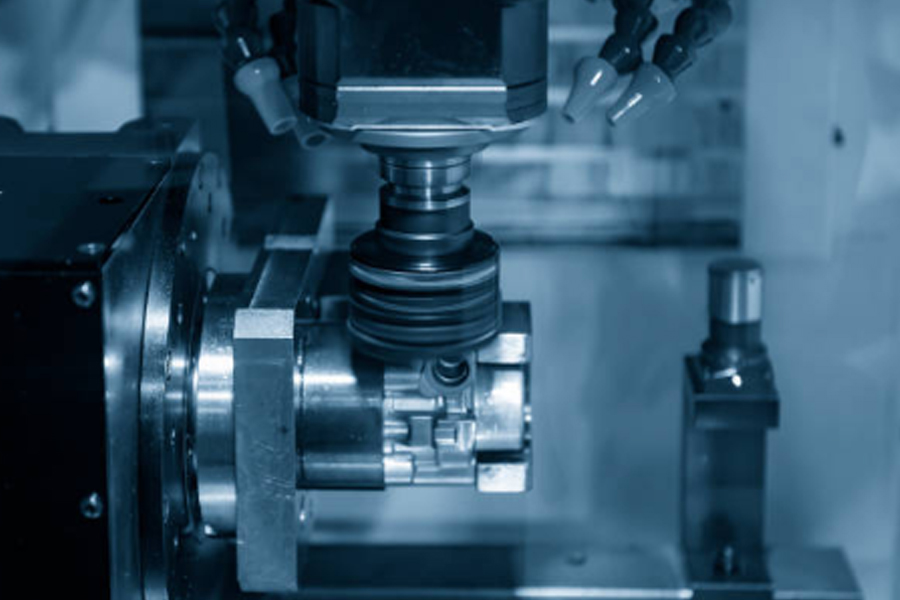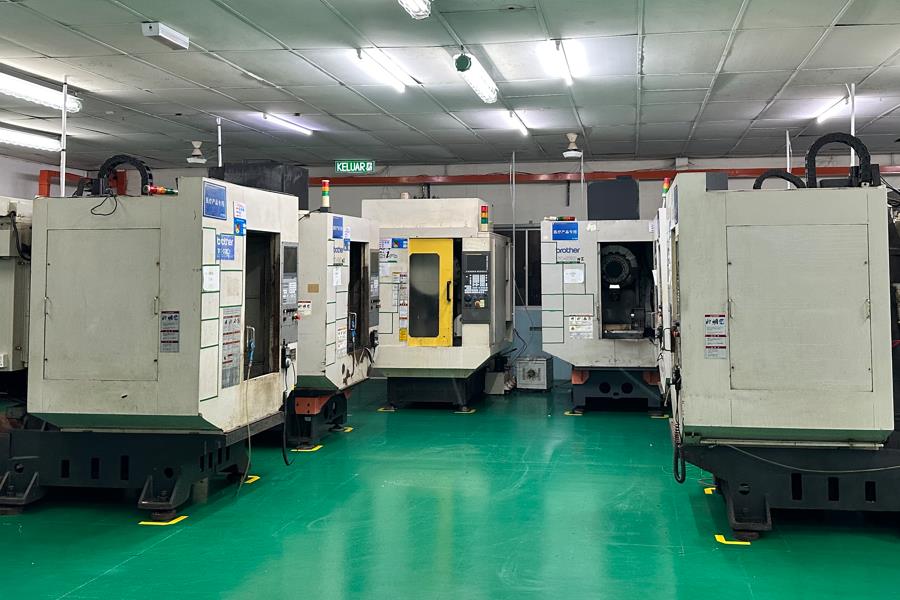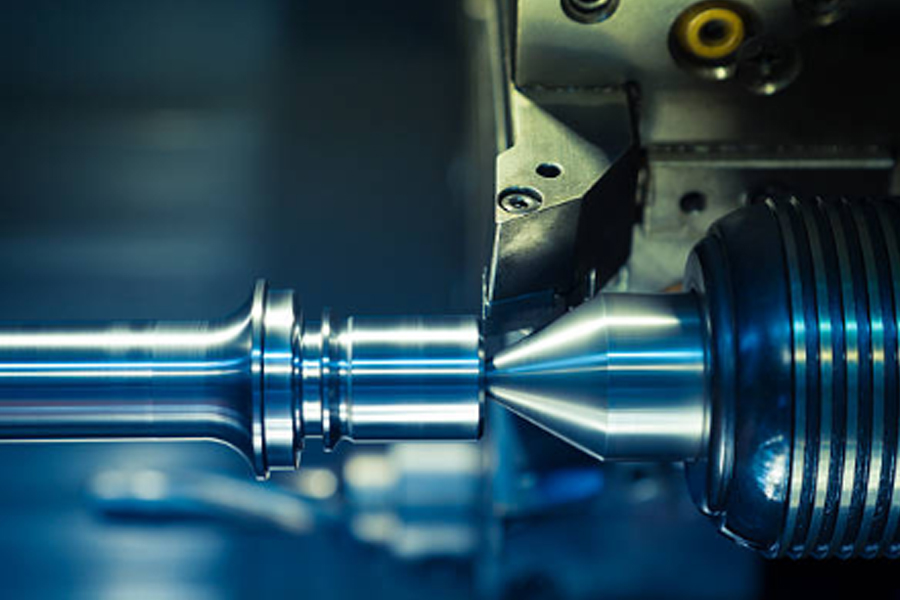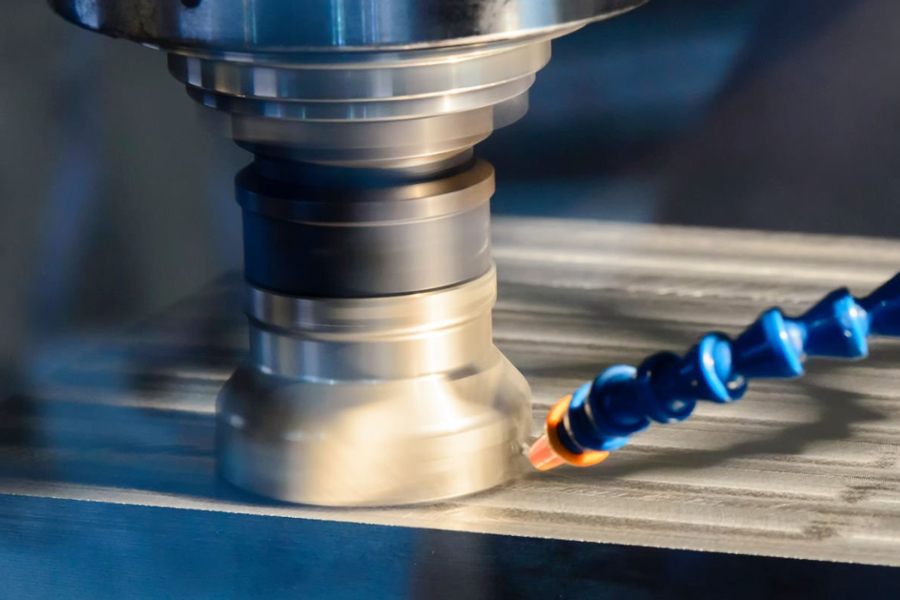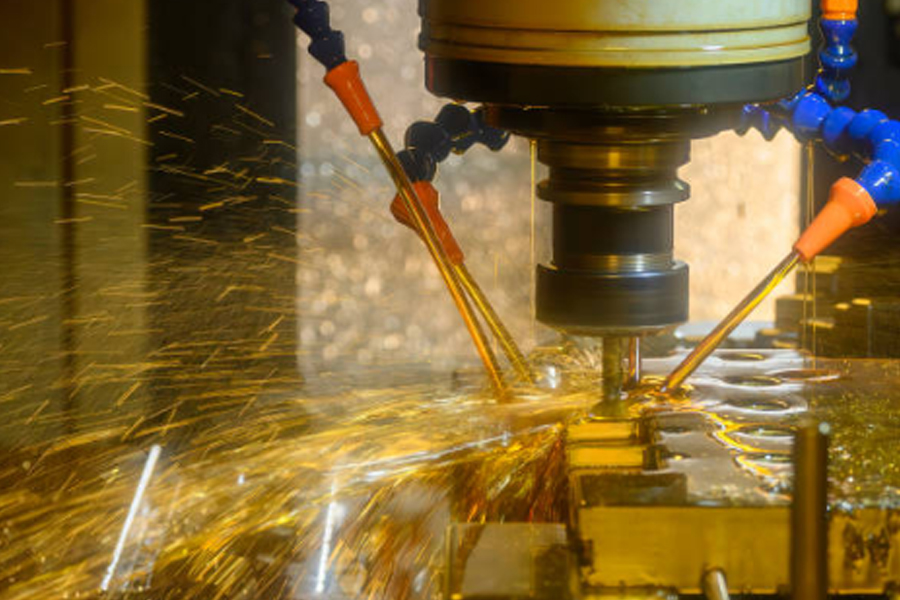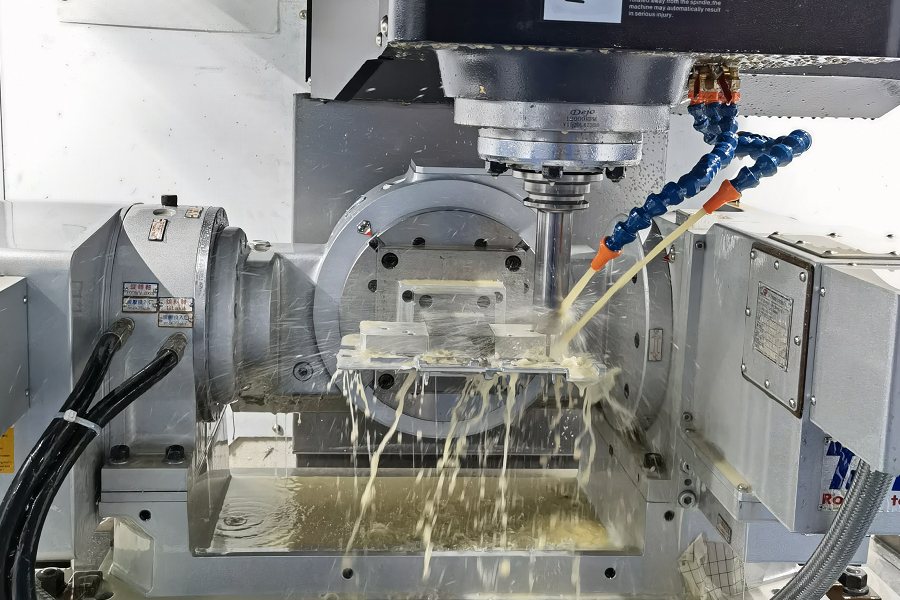Selecting the right material is one of the most important decisions in any CNC machining project. The choice doesn’t just determine how strong or durable your part will be, which also impacts cost, machinability, lead times, and overall product performance.
For procurement professionals, engineers, and decision-makers, understanding the materials available for CNC machining is critical to balancing performance and cost-efficiency. This guide will walk you through the most commonly used metals and plastics, key selection criteria, and how to make the right material choice for your next project.
Why Does Material Selection Matter in CNC Machining?
Choosing a material is far more than just picking a substance from a list. It’s a strategic decision that reverberates through every stage of the manufacturing process and the entire lifecycle of the part.
The Role of Material in Part Performance and Durability
The material is the very essence of the part. Its inherent properties—such as strength, hardness, chemical resistance, and thermal stability—directly determine how the component will perform under its intended operating conditions.
- Strength & Hardness: Will the part withstand mechanical stress, impact, or cyclic loading? A high-strength steel might be perfect for a structural bracket, while a softer aluminum would fail.
- Durability & Wear Resistance: How will the part hold up over time? For components like gears or bushings, a wear-resistant material like Nylon or Delrin is essential to ensure a long service life.
- Environmental Resistance: Will the part be exposed to moisture, chemicals, or extreme temperatures? Stainless steel is chosen for its corrosion resistance in wet environments, while PEEK is used in applications with high heat and aggressive chemicals.
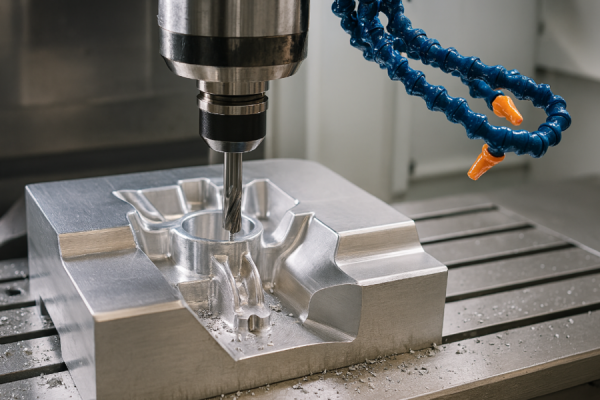
How Material Choice Affects Cost, Cycle Time, and Tool Wear
The machinability of a material has a profound impact on the manufacturing process itself. Machinability refers to the ease with which a material can be cut, drilled, milled, or turned while maintaining an acceptable surface finish and tool life.
- Cost: Harder, more abrasive materials like titanium or hardened tool steels are significantly more difficult to machine than “free-machining” materials like Aluminum 6061 or Brass C360. This difficulty translates directly into higher costs due to longer cycle times, increased tool wear, and the need for more robust machinery and specialized cutting fluids.
- Cycle Time: Softer, more machinable materials allow for faster cutting speeds and feed rates, drastically reducing the time it takes to produce each part. This shorter cycle time lowers the per-part cost and accelerates lead times.
- Tool Wear: Machining abrasive materials wears down cutting tools quickly. The cost of replacing or re-sharpening these tools is factored into the final price of the component.
Risks of Poor Material Selection
Making a suboptimal material choice can have serious consequences that extend beyond the manufacturing floor.
- Higher Costs: Over-engineering a part with an unnecessarily expensive or difficult-to-machine material inflates the budget. Under-engineering with a cheap but unsuitable material leads to costly failures and recalls.
- Production Delays: Choosing a material with poor machinability or long procurement lead times can derail project timelines.
- Catastrophic Part Failure: This is the most significant risk. If a material cannot handle the mechanical, thermal, or chemical stresses of its application, it can lead to equipment damage, safety hazards, and significant damage to your brand’s reputation.
What Are the Most Common Metals Used in CNC Machining?
Metals are the traditional workhorses of CNC machining, valued for their strength, durability, and thermal conductivity. Ares Precision has extensive experience machining a wide array of metals to meet the demanding standards of industries across Malaysia and beyond.
Aluminum (e.g., 6061, 7075)
Aluminum is arguably the most popular material for CNC machining, and for good reason. It offers an exceptional balance of strength, low weight, and cost-effectiveness.
- Key Properties: Lightweight, excellent strength-to-weight ratio, high thermal and electrical conductivity, natural corrosion resistance, and outstanding machinability.
- Common Grades:
- Aluminum 6061: The “workhorse” alloy. It offers good mechanical properties, excellent corrosion resistance, and is easily welded and anodized. It is one of the most cost-effective and machinable metals available.
- Aluminum 7075: A high-strength “aerospace grade” alloy. It is significantly stronger than 6061 but more challenging to weld and less corrosion-resistant. It’s chosen when maximum strength-to-weight is paramount.
- Common Applications: Aerospace components, automotive parts, consumer electronics enclosures (laptops, phones), fixtures, and prototypes.
Carbon and Alloy Steel (e.g., 1018, 4140)
Steel is synonymous with strength and toughness. It is the material of choice for applications requiring high durability and load-bearing capacity at a reasonable cost.
- Key Properties: High strength, excellent hardness and durability, exceptional impact resistance, and cost-effectiveness. Its primary drawback is susceptibility to rust, requiring a protective finish.
- Common Grades:
- Low-Carbon Steel (e.g., 1018, 12L14): Soft, ductile, and easily machined. It’s ideal for general-purpose parts that do not require high strength. 12L14 contains lead, making it exceptionally easy to machine.
- Alloy Steel (e.g., 4140): Contains other elements (like chromium and molybdenum) that give it superior hardness and strength compared to carbon steel. It can be heat-treated for even greater toughness.
- Common Applications: Industrial machinery, jigs and fixtures, gears, shafts, structural components, and tooling.
Stainless Steel (e.g., 304, 316, 17-4 PH)
Stainless steel offers the strength of steel with the added, critical benefit of corrosion and heat resistance, thanks to its chromium content.
- Key Properties: Excellent corrosion resistance, good strength and hardness, heat resistance, and a hygienic, non-porous surface. It is generally more difficult to machine than carbon steel.
- Common Grades:
- Stainless Steel 304: The most common grade, offering excellent corrosion resistance for general applications. Widely used in kitchen equipment and industrial hardware.
- Stainless Steel 316/316L: Contains molybdenum, giving it superior resistance to chlorides (like saltwater). This makes it the standard for marine, medical, and food processing applications.
- Stainless Steel 17-4 PH: A precipitation-hardening grade that can be heat-treated to achieve very high strength and hardness, rivaling alloy steels while retaining good corrosion resistance.
- Common Applications: Medical and surgical devices, food and beverage processing equipment, marine hardware, chemical tanks, and high-end architectural fixtures.
Brass and Copper
These red metals are prized for their unique combination of machinability, conductivity, and aesthetic appeal.
- Key Properties:
- Brass (e.g., C360): Often considered the easiest of all materials to machine. It is known for its low friction, good corrosion resistance, and attractive gold-like appearance.
- Copper (e.g., C110): Valued above all for its superb electrical and thermal conductivity, second only to silver. It is softer and more difficult to machine than brass.
- Common Applications:
- Brass: Plumbing fittings, electrical connectors, musical instruments, decorative hardware, and consumer goods.
- Copper: Heat sinks, busbars, electrical contacts, wiring, and high-performance induction coils.
Titanium (e.g., Grade 2, Grade 5)
Titanium is a premium engineering material known for having the highest strength-to-weight ratio of any metal. It is as strong as many steels but nearly half the weight.
- Key Properties: Incredible strength-to-weight ratio, outstanding corrosion resistance (especially against saltwater and chemicals), and biocompatibility. Its major drawbacks are high material cost and very poor machinability, which significantly increases manufacturing costs.
- Common Grades:
- Grade 2 (Commercially Pure): Offers excellent corrosion resistance and good formability but lower strength.
- Grade 5 (Ti 6Al-4V): The most common titanium alloy. It is significantly stronger than pure titanium and can be heat-treated. It is the go-to choice for high-performance applications.
- Common Applications: Aerospace structural components (airframes, landing gear), high-performance automotive parts, medical implants (hip joints, bone screws), and luxury consumer goods.
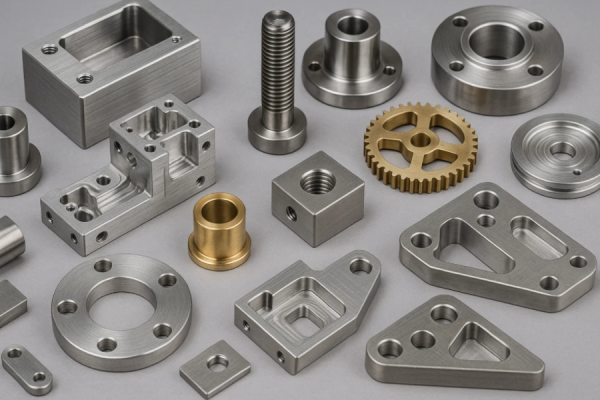
What About Plastics and Composites?
Plastics have become indispensable in modern manufacturing. They are lightweight, corrosion-proof, and can offer unique properties not found in metals, often at a fraction of the cost. The growing use of plastics in CNC machining is driven by the demand for cost-sensitive, lightweight, and high-performance parts.
ABS and Delrin (Acetal)
These are two of the most versatile and popular plastics for CNC machining.
- ABS (Acrylonitrile Butadiene Styrene): Known for its toughness, impact resistance, and ease of machining. It has a low melting point, making it ideal for general-purpose prototyping. It’s often used for form-and-fit checks before moving to a final production material.
- Best for: Enclosures, jigs, fixtures, and affordable prototypes.
- Delrin (Acetal / POM): A high-performance engineering thermoplastic known for its high stiffness, low friction, excellent dimensional stability, and good chemical resistance. It bridges the gap between plastics and metals for mechanical applications.
- Best for: Gears, bearings, bushings, rollers, and precision mechanical components.
Nylon (Polyamide / PA)
Nylon is valued for its toughness, durability, and excellent wear resistance. It can often replace metal parts in applications where abrasion is a concern.
- Key Properties: Lightweight, high tensile strength, and superior resistance to wear and abrasion. It is also self-lubricating in many cases. It can absorb moisture, which can affect dimensional stability.
- Best for: Wear pads, bushings, spacers, bearings, and guides.
PEEK (Polyether Ether Ketone)
PEEK is a high-performance, high-temperature thermoplastic that sits at the top of the polymer pyramid. It is often used in applications where other plastics would fail.
- Key Properties: Exceptional mechanical strength at high temperatures (continuous use up to 250°C), outstanding chemical and hydrolysis resistance, and excellent wear properties. It is comparable to some metals in performance but is very expensive.
- Best for: Demanding applications in aerospace, medical (it is biocompatible), and oil & gas industries; pump components, piston parts, and electrical insulation in harsh environments.
How Do You Decide Which Material Is Best for Your Part?
With a vast menu of materials available, making the right choice requires a systematic evaluation of your project’s specific needs. At Ares Precision, we guide our clients through this process by considering the following critical factors:
- Strength and Weight Requirements:
- Question: What mechanical loads will the part endure? Is it structural? Is weight a critical factor (e.g., in aerospace or robotics)?
- Decision: For high-load applications, alloy steel or titanium may be necessary. For applications where weight is a penalty, aluminum or high-strength plastics like PEEK are superior choices.
- Corrosion Resistance and Operating Environment:
- Question: Will the part be exposed to moisture, saltwater, chemicals, or humidity?
- Decision: For any wet or corrosive environment, stainless steel (316 for marine/chemical), titanium, or plastics are the default choices. Standard steel will require a protective coating to prevent rust.
- Electrical and Thermal Properties:
- Question: Does the part need to conduct or insulate electricity? Does it need to manage heat?
- Decision: Copper is the premier choice for electrical conductivity. Aluminum is excellent for thermal conductivity (e.g., heat sinks). Most plastics, like PEEK and Delrin, are excellent electrical insulators.
- Cost and Production Efficiency:
- Question: What is the target budget per part? Is this a high-volume production run where cycle time is critical?
- Decision: For cost-sensitive projects, materials with high machinability like Aluminum 6061, Brass C360, or low-carbon steel are ideal. Avoid expensive and difficult-to-machine materials like titanium unless absolutely required by performance needs.
- Regulatory or Industry-Specific Standards:
- Question: Does the part need to be biocompatible (medical), food-safe (FDA compliant), or meet specific aerospace (AS9100) or automotive standards?
- Decision: This often dictates the material. Medical implants require biocompatible titanium or PEEK. Food processing equipment requires food-grade stainless steel 316 or FDA-compliant plastics.
How Does Machinability Affect Your Choice?
Machinability is a measure of how easily a material can be cut, which directly influences production cost and speed.
How Materials Influence Tooling, Cycle Time, and Lead Times
- High Machinability (e.g., Aluminum 6061, Brass C360):
- Tooling: Standard, less expensive cutting tools can be used. Tool life is long.
- Cycle Time: Machines can run at high speeds and feed rates, producing parts quickly.
- Lead Time: Shorter production times mean faster delivery.
- Low Machinability (e.g., Titanium, Inconel, Hardened Steel):
- Tooling: Requires specialized, expensive carbide or coated tools that wear out faster.
- Cycle Time: Machines must run at much slower speeds to avoid tool breakage and overheating. This drastically increases the time to make one part.
- Lead Time: Longer production times lead to extended delivery schedules.
Why Choosing a Machinable Material Can Reduce Overall Production Cost
The relationship is simple: Time is money on a CNC machine. Even if a high-performance material has a low raw material cost, if it takes three times as long to machine, the final part cost will be significantly higher due to the increased machine time, labor, and tooling consumption.
Therefore, a key principle of Design for Manufacturability (DFM) is to select the most machinable material that still meets all the functional requirements of the part. This is often where an experienced CNC machining partner can provide immense value, suggesting alternatives that deliver 95% of the performance for 50% of the cost.
What Role Do Surface Finish and Post-Processing Play?
The raw machined part is often not the final product. Surface finishes are applied to enhance appearance, improve durability, increase corrosion resistance, or add other functional properties. Your material choice directly impacts the available finishing options.
Finishing Options by Material:
- Aluminum:
- Anodizing (Type II & Type III): Creates a hard, corrosion-resistant, and decorative ceramic layer. Can be dyed in various colors.
- Powder Coating: Applies a durable, protective, and decorative polymer finish.
- Chromate Conversion Coating (Alodine): Provides corrosion resistance and acts as a primer for paint.
- Steel:
- Plating (Zinc, Nickel, Chrome): Adds a sacrificial layer for corrosion resistance and aesthetic appeal.
- Black Oxide: A conversion coating that provides mild corrosion resistance and a deep black appearance.
- Powder Coating & Painting: For durable color and protection.
- Stainless Steel:
- Passivation: A chemical process that removes free iron from the surface, enhancing its natural corrosion resistance.
- Electropolishing: A “reverse plating” process that removes a microscopic layer of material to create an incredibly smooth, clean, and corrosion-resistant surface.
- Bead Blasting: Creates a uniform matte or satin finish.
- Brass & Copper:
- Polishing: Can be polished to a brilliant, mirror-like shine for decorative purposes.
When designing your part, it’s crucial to account for the thickness that these finishes will add, especially for components with tight tolerances.
How Can You Balance Cost, Performance, and Lead Time?
Navigating the trade-offs between these three pillars is the art of effective procurement and engineering. Here are some strategies:
- Consider Material Substitutions: Challenge your assumptions. Does a non-critical part really need expensive and difficult-to-machine Stainless Steel 316, or would anodized Aluminum 6061 suffice? Could a high-performance plastic like Delrin replace a brass component to save weight and cost?
- Standardize Your Material Palette: Whenever possible, design around common, readily available materials like Aluminum 6061, Stainless Steel 304, and Delrin. Suppliers like Ares Precision often stock these materials, reducing procurement lead times and material costs due to bulk purchasing.
- Use Prototyping to Validate: Before committing to a large production run with an expensive material like PEEK or titanium, create prototypes using a cheaper, analogous material (e.g., ABS or Nylon) to validate the form, fit, and basic function. This de-risks the investment in high-cost materials.
- Work with a Supplier Who Stocks Common Materials: Partnering with a CNC service provider that maintains an inventory of the most common metals and plastics can dramatically shorten your lead times. It eliminates the time spent waiting for raw material to be sourced and delivered.
How Can Ares Precision Help with CNC Machining Material Selection?
Choosing the right material is a collaborative process, and you don’t have to do it alone. At Ares Precision, we are more than just a CNC machining service provider in Malaysia; we are your manufacturing partners.
- Experience with Diverse Metals and Plastics: Our team has hands-on experience machining everything from common aluminums and steels to challenging exotics like titanium and high-performance polymers. We know how these materials behave on the machine and in their final application.
- Engineering Support for Cost-Effective Decisions: Our engineering team can review your designs and provide expert Design for Manufacturability (DFM) feedback. We can help you identify opportunities to substitute materials, adjust tolerances, and refine features to reduce cost and improve performance without compromising your design intent.
- In-House Machining and Finishing: With a full suite of state-of-the-art CNC mills and lathes, along with established partnerships for a wide range of finishing services, we offer a seamless, one-stop solution for both prototypes and full-scale production runs.
Don’t let material selection be a point of uncertainty in your project. Leverage our expertise to ensure your parts are made from the ideal material, delivered on time, and within budget.
Ready to start your next project? Contact the Ares Precision team today for a free consultation or upload your CAD files to our secure portal to receive a custom quote.

